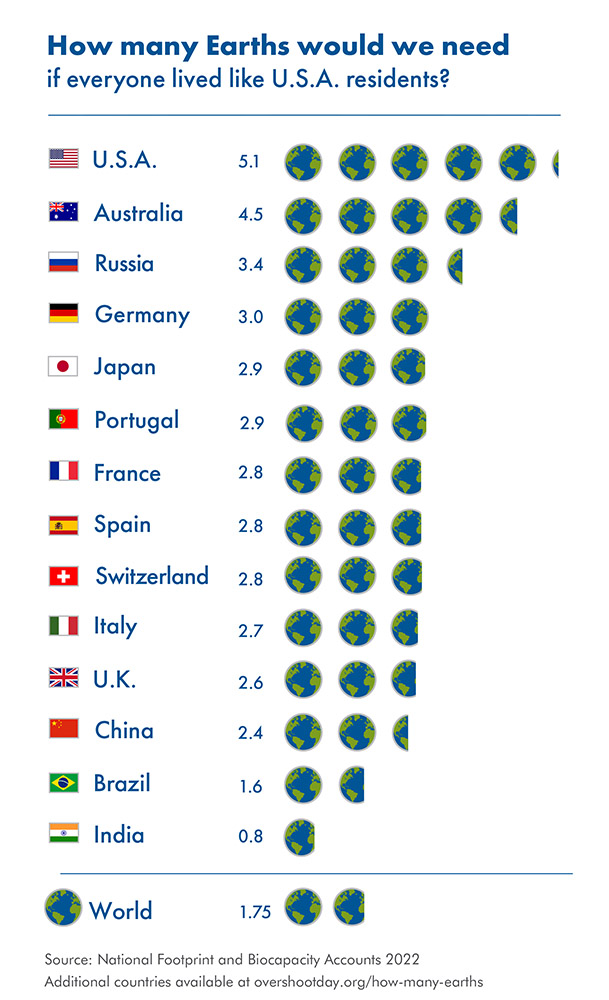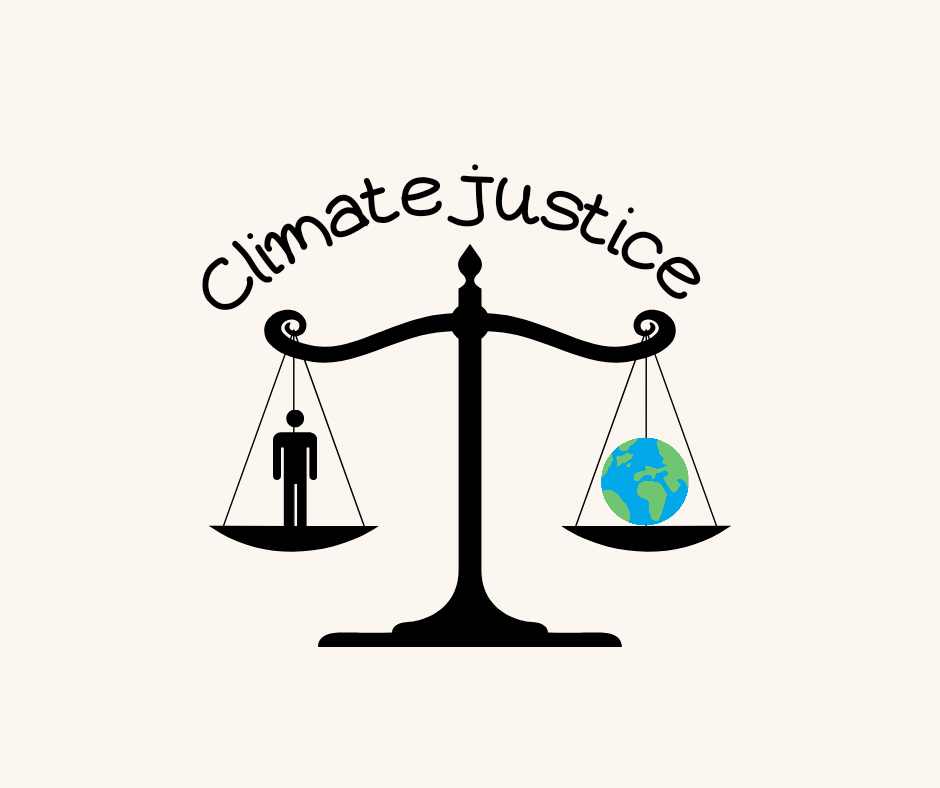Now that we have talked about the impacts of climate change, it is time to discuss about climate justice.
The Cambridge dictionary defines climate justice as “the idea that the rich countries of the world must take responsibility for climate change and the damage it causes and help poorer countries and people because they have not caused most of the problem and are the worst affected”.
Climate justice emerged as a term for the first time in 1989 by Weiss [4] in a book on Intergenerational Justice, but became mostly known in June 2002 at the Earth Summit in Bali, during which the Principles of Climate Justice are written. However, a universally accepted definition does not exist. Another definition that summarizes what climate justice is states that “climate justice is built on the fact that the world’s poorest and those least responsible for the human causes of climate change, are the most vulnerable and exposed to its effects” [2]. In other words, climate justice is a way to dissolve the unequal burdens created by climate change. Additionally, climate justice entails that all people have fair treatment without discrimination [3].
The environmental movement can only survive if it becomes a justice movement. As a pure environmental movement, it will either die or it will survive as a corporate “greenwash”.
Climate justice lies upon many different aspects: between developing and developed countries, young and old people or even among people that belong to the same generation. Everyone on Earth will face/is facing the consequences of climate change, however not in proportional or fair ways. The latest Intergovernmental Panel on Climate Change (IPCC) report released in 2022, identifies for the first time the number of people who live in regions that are highly vulnerable to climate change: 3.3 to 3.6 billion people, i.e., nearly half the world’s population.
Earth Overshoot
In order to understand better what is climate justice think of this concept: different countries live using different amounts of natural resources. So how many Earths do we need? Well, this depends on the country that we are talking about. For example, if we all lived as American citizens we would need 5.1 Earths, while living like an Indian needs 0.8 Earths. According to Earth Overshoot Day “Earth Overshoot Day marks the date when humanity’s demand for ecological resources and services in a given year exceeds what Earth can regenerate in that year”. Earth Overshoot Day is different for different countries. Simply put, it is the day during which if all people on Earth lived like a specific country, the natural resources would be depleted.

In other words, India uses the least possible natural resources, needs to achieve the same growth with the developed world, and faces early climate change consequences (as shown in Before the Flood) even though Indians do not contribute as much. In other words, lifestyle is a critical factor to take into account when speaking about climate change.
According to the latest Intergovernmental Panel on Climate Change (IPCC) report, Mozambique, Somalia, Nigeria, Afghanistan and Haiti are labelled as “very highly vulnerability” countries, while India, Pakistan and the Philippines are in the “high vulnerability”. On the other hand, UK, Australia, Canada and Sweden (approximately 1.8-2 billion people) are estimated as countries with “low” or “very low vulnerability”. However, that does not mean that every single person in these countries is equally vulnerable.
So here is the climate justice question: which of these countries labelled as “very high and very low vulnerability” are more responsible to climate change? And if some countries are more responsible, do they have the corresponding consequences of climate change?
Examples of climate injustice
Solomon Islands
The Solomon Islands is a nation of 996 islands in the South Pacific. The country is one of the most vulnerable to climate change because the majority of the population lives within 1.5 kilometer of the coastline. The islands are regularly exposed to extreme rainfall events, sea level rise, coral bleaching, food security crisis etc. Since 1950s, 5 of the islands disappeared due to sea level rise [1]. Thankfully these islands were not inhabited. Climate injustice lies in the fact that Solomon Islands are not among the main contributors to climate change; however, they are the first to bear the consequences.
Arctic
The Arctic is experiencing the fastest warming. Specifically, it is warming four times as fast as the rest of the world according to Peter Jacobs et al. (NASA Goddard Space Flight Center). Summer sea ice extent has declined by 45% over the last three decades, allowing increased shipping activity [5]. As you can see in the video created by NASA Climate Change, Arctic ice is disappearing in unprecedented rate.
What does this mean and why is it important? First of all, ice melting automatically means that sea level will rise. And as highlighted above, this may impose serious danger to people living in coastal areas. Secondly, since ice is white, it reflects back to space the solar radiation. If the ice melts, it becomes black leading to less and less reflection and more heat absorption. This means that the global temperature will rise since the planet will absorb more sunlight. Thirdly, the local ecosystems as well as the food security of the indigenous populations will be at risk. And the climate justice questions are the following: is the Arctic and its biodiversity accountable for climate change? If yes how? And if no, why humans do not respect the natural ecosystems? Should the Arctic region have legal rights?
Climate refugees
According to Cambridge Dictionary a climate refugee is “someone who is forced t leave their home country or area because climate change has made it impossible for them to continue to live or work there”. This means that people may move within or outside their homeland. People will move around due to climate change (for instance, extreme weather events (such as floods, hurricanes, heatwaves etc.), food crises, sea level rise etc.). As extreme events due to climate change become more frequent, climate refugees will increase. According to the Groundswell report of the World Bank “as many as 216 million people could move within their own countries due to slow-onset climate change impacts by 2050 across six regions”.
According to the Internal Displacement Monitoring Centre from 2008 to 2020, 318.7 million citizens were displaced due to disasters (Figure 2). This is the equivalent of one person being displaced every second (European Parliamentary Research Service).

Food for thought
Now that climate justice is explained, the questions remain…
- How should the burden of climate change be allocated? Who should pay more and why? Who should decide on these issues?
- Do developing countries have the right to achieve the same level of growth with the developed countries? If yes, does that mean that they should pollute the environment as much as the developed countries did the past 50 years?
- Which countries have benefitted the most from using fossil fuels? Are these the same countries that will be most impacted by climate change?
- Why is justice considered a central issue in dealing with the climate change problem?
- Is it right for humans to knowingly cause the extinction of a species for the convenience of humanity?
No young or unborn child is responsible for climate change, and yet their ability to cope with the effects of rising temperatures is dependent on the action we take now.
Unknown
Sources
[1] Albert, S., Leon, J. X., Grinham, A. R., Church, J. A., Gibbes, B. R., & Woodroffe, C. D. (2016). Interactions between sea-level rise and wave exposure on reef island dynamics in the Solomon Islands. Environmental Research Letters, 11(5), 054011.
[2] Robinson, M., & Miller, A. (2009). Expanding global cooperation on climate justice. London: Brettonwoods Project.
[3] Sampford, C., & Zifcak, S. (2016). Rethinking international law and justice. Routledge.
[4] Schlosberg, D., & Collins, L. B. (2014). From environmental to climate justice: climate change and the discourse of environmental justice. Wiley Interdisciplinary Reviews: Climate Change, 5(3), 359-374.
[5] Vincent, W. F. (2020). Arctic climate change: Local impacts, global consequences, and policy implications. In The Palgrave handbook of Arctic policy and politics (pp. 507-526). Palgrave Macmillan, Cham.
